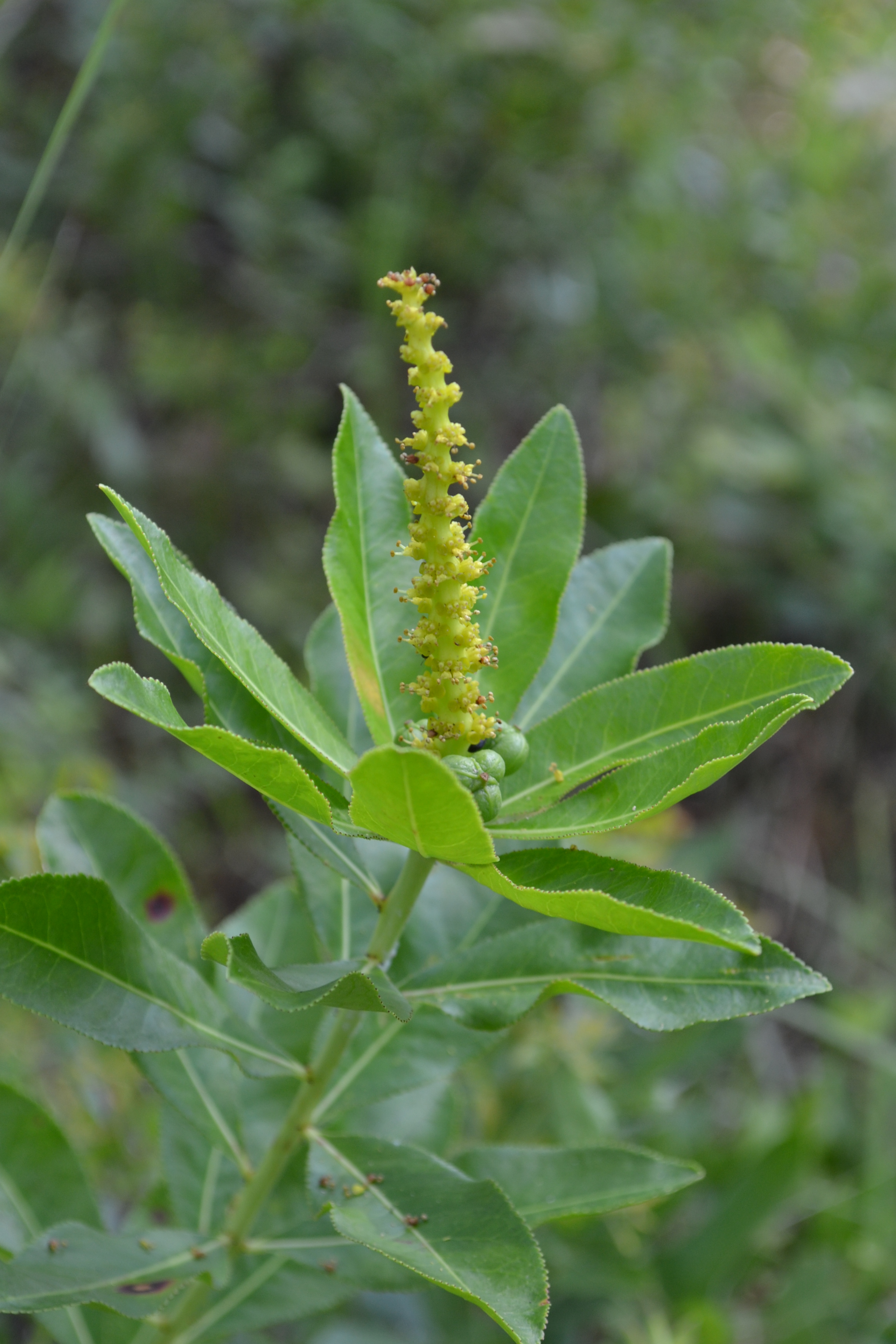Difference between revisions of "Stillingia sylvatica"
(→Seed dispersal) |
|||
| Line 24: | Line 24: | ||
===Phenology=== <!--Timing off flowering, fruiting, seed dispersal, and environmental triggers. Cite PanFlora website if appropriate: http://www.gilnelson.com/PanFlora/ --> | ===Phenology=== <!--Timing off flowering, fruiting, seed dispersal, and environmental triggers. Cite PanFlora website if appropriate: http://www.gilnelson.com/PanFlora/ --> | ||
===Seed dispersal=== | ===Seed dispersal=== | ||
| + | It is dispersed explosively (up to 3 meters); seeds are forcefully expelled after the fruit matures and dries. It can also be dispersed by ants (Stamp and Lucas 1990). | ||
| + | |||
===Seed bank and germination=== | ===Seed bank and germination=== | ||
===Fire ecology=== <!--Fire tolerance, fire dependence, adaptive fire responses--> | ===Fire ecology=== <!--Fire tolerance, fire dependence, adaptive fire responses--> | ||
Revision as of 19:51, 17 June 2015
| Stillingia sylvatica | |
|---|---|

| |
| Photo taken by Michelle M. Smith | |
| Scientific classification | |
| Kingdom: | Plantae |
| Division: | Magnoliophyta – Flowering plants |
| Class: | Magnoliopsida – Dicotyledons |
| Order: | Euphorbiales |
| Family: | Euphorbiaceae |
| Genus: | Stillingia |
| Species: | S. sylvatica |
| Binomial name | |
| Stillingia sylvatica L. | |

| |
| Natural range of Stillingia sylvatica from USDA NRCS Plants Database. | |
Contents
Description
Distribution
Ecology
Habitat
Phenology
Seed dispersal
It is dispersed explosively (up to 3 meters); seeds are forcefully expelled after the fruit matures and dries. It can also be dispersed by ants (Stamp and Lucas 1990).